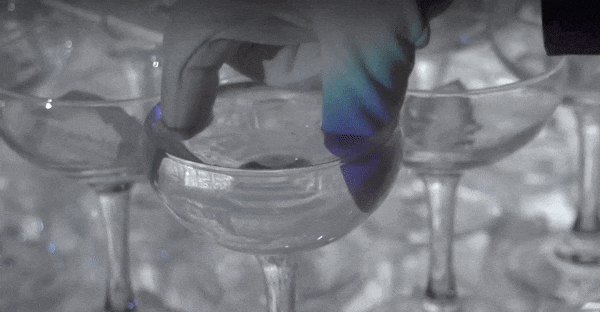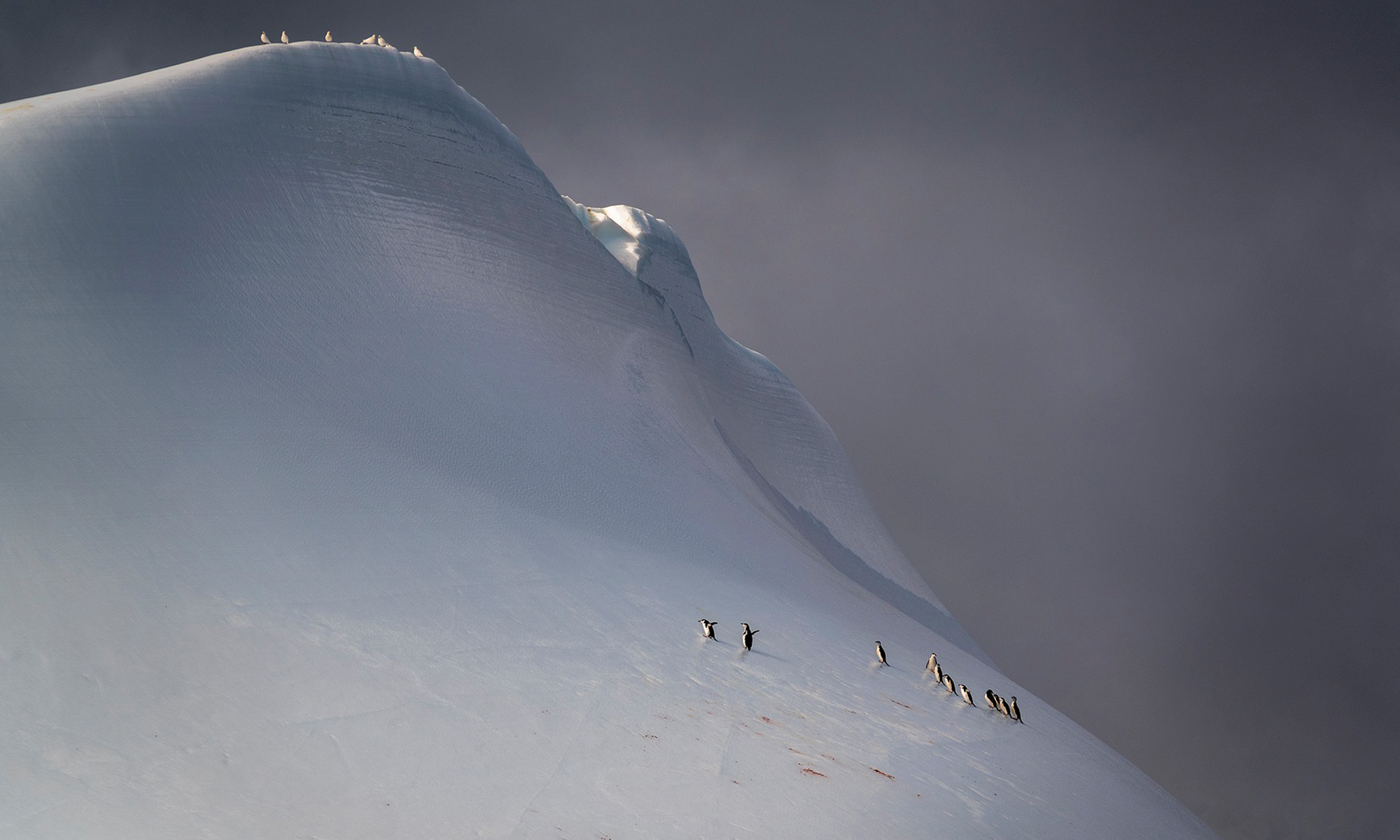
For some people, climate change can be an abstract concept, especially if they’re living somewhere that hasn’t experienced serious effects yet.
Art is one effective way to provide people with a vision of what the future could look like if we do take action — or if we don’t.
That’s why TED Countdown — a global rallying cry to cut greenhouse gas emissions in half by 2030 and move towards a zero-carbon world — has partnered with the nonprofit creative studio Fine Acts to launch 10 public artworks from TED Fellows on 10.10.2020. Fine Acts, led by TED Senior Fellow Yana Buhrer Tavanier, curated and produced this collection.
Four of them were covered in a previous post, and here’s a look at the other six. (Go here to see and learn more about all of the artists and their works.)

Cairo is perhaps best known for the nearby Pyramids of Giza, the last surviving wonder of the ancient world. But today, in the shadows of one of humankind’s greatest architectural achievements, is also the city’s massive waste-management problem. To highlight the issue, artist and historian Bahia Shehab decided to build a pyramid of her own — out of trash. On display for one week at a location in Cairo, the pyramid challenges people to rethink their consumption and waste habits.
“As a species, we have built monuments that have defeated time. We have designed civilizations that dreamt of eternity,” she says. “With climate change, this eternity is now challenged. Now is the time for us to rethink our legacy on this planet. Are we going to come together to build a sustainable future for all of us — or will our new legacy be pyramids of garbage?”

As rising seas continue advancing upon coastlines, millions of people in the US alone are at risk of displacement. (Worldwide, one estimate says the number could be close to 500 million people.) To illustrate this threat, new media artist Matt Kenyon designed two haunting art installations — called TIDE and Cloud — at Eleven Twenty Projects and Big Orbit Project Space in Buffalo, New York, which are on display until December 2020. “Both works provide a visceral representation of the next housing crisis, when homes lose their value and families are displaced due to the forces of climate change,” he says.

TIDE is a 15-foot-tall champagne glass pyramid. Each glass holds a miniature house (shown above) made from a unique material that appears to turn invisible when submerged in water, symbolizing the homes lost to rising tides.

Cloud represents disappearing opportunities. A machine produces house shapes out of helium foam. These homes shrink and grow in tandem with real-time housing and climate data, before floating out of reach in the sky. “The viewers witness common house-ownership dreams disappear as fast as they materialize,” Kenyon says.

The vanishing ice in Arctic and Antarctica may seem faraway to many people, but for photographer Camille Seaman, currently based in Limerick, Ireland, glacial melt and sea-level rise are close by. “It is estimated that 70,000 Irish addresses are at risk of coastal flooding by 2050,” she explains. “A three-meter storm surge to such low-lying areas such as Limerick would have devastating effects.”

Seaman has traveled to both the North and South Poles, where she has captured the ice in photographs and video to viscerally show us what’s happening there and what’s headed our way. She’s combined some of her most haunting images into a short video, and residents of four coastal cities around the world — New York, Tokyo, Amsterdam and Limerick — are invited to project the video on their walls and buildings. Each video concludes with a slide of the sea-level rise timeline in that region by 2050 if no action is taken on climate change.

Temperatures in Austin, Texas, are on the rise, and according to projections through 2100, climate change will put the city at higher risk of extended drought, wildfires, intense rain and flooding. Artist Lope Gutiérrez-Ruiz wanted to show Texans that they are standing at a crossroads between two futures, so he designed a unique mural that changes color as it gets hotter.
In collaboration with Kimie Flores and Michu Benaim Steiner, he put this showstopper on the exterior of 501 Studios. The mural’s special thermochromic paint is activated when the temperature hits 77 degrees Fahrenheit. “This artwork calls people to ‘Change the world’ and ‘Change climate change,’ underlining the importance of individual actions to the collective future,” Gutiérrez-Ruiz explains.

Los Angeles is no stranger to the impact of climate change. In recent years, the city has struggled to manage heatwaves, wildfires and rolling blackouts. For Countdown, artist Christine Sun Kim unveiled a public billboard on the 710 Freeway near Bandini Blvd called The Sound of Temperature Rising.
Of the image, she says, “It points to the reality of climate disaster that has become all too clear on the West Coast and the need for significant change now.” The illustration, on display until the end of October, features a graph of music notes that get progressively longer and redder until we can no longer see where they end — a plea to act on climate change before our planet reaches an irreversible tipping point.

Globally, species are disappearing at an unprecedented rate. In response, architect Mitchell Joachim, designer Chris Woebken and biologist Oliver Medvedik partnered to create The Anti-Extinction Library in New York City’s Brooklyn Navy Yard, on display through October 2020. But their sculptural piece isn’t just strikingly beautiful — it’s also functional.

Their egg-shaped library contains a micro-vault of cryogenically-preserved, or frozen, test tubes, filled with embryonic cells and DNA of rare lifeforms. “We need to raise awareness of the urgency of preserving and defending the essential rights of diverse local species,” the artists explain. “Into each stored organism we will encode the following Nature Bill of Rights on to the DNA: All human and non-human beings are born or created free and equal in dignity and rights. Regardless of legal status and territories, they have the right to life and [to] contribute or take part in any form or shape they desire in any environment, whether natural, digital or otherwise.”












